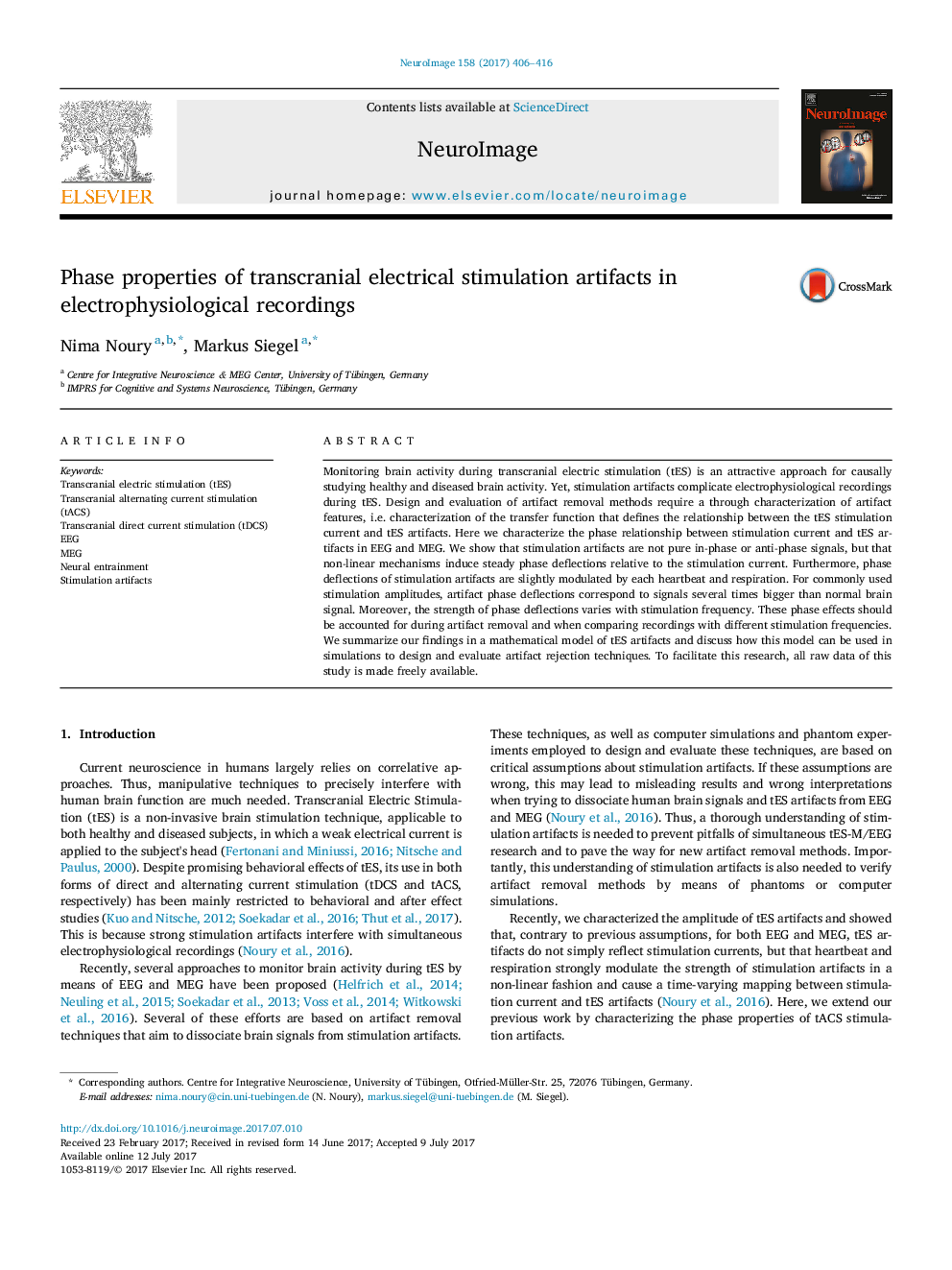| Article ID | Journal | Published Year | Pages | File Type |
|---|---|---|---|---|
| 5630992 | NeuroImage | 2017 | 11 Pages |
â¢Systematic characterization of the phase of tES artifacts for EEG and MEG.â¢tES artifacts' phases are modulated by heartbeat and respiration for EEG and MEG.â¢A mathematical model of tES artifacts.
Monitoring brain activity during transcranial electric stimulation (tES) is an attractive approach for causally studying healthy and diseased brain activity. Yet, stimulation artifacts complicate electrophysiological recordings during tES. Design and evaluation of artifact removal methods require a through characterization of artifact features, i.e. characterization of the transfer function that defines the relationship between the tES stimulation current and tES artifacts. Here we characterize the phase relationship between stimulation current and tES artifacts in EEG and MEG. We show that stimulation artifacts are not pure in-phase or anti-phase signals, but that non-linear mechanisms induce steady phase deflections relative to the stimulation current. Furthermore, phase deflections of stimulation artifacts are slightly modulated by each heartbeat and respiration. For commonly used stimulation amplitudes, artifact phase deflections correspond to signals several times bigger than normal brain signal. Moreover, the strength of phase deflections varies with stimulation frequency. These phase effects should be accounted for during artifact removal and when comparing recordings with different stimulation frequencies. We summarize our findings in a mathematical model of tES artifacts and discuss how this model can be used in simulations to design and evaluate artifact rejection techniques. To facilitate this research, all raw data of this study is made freely available.
